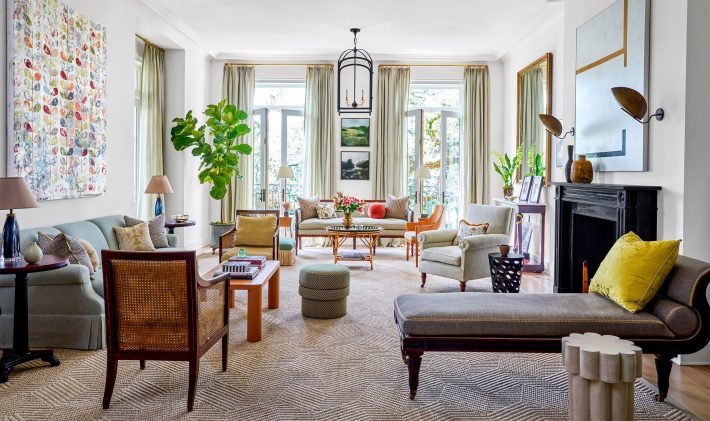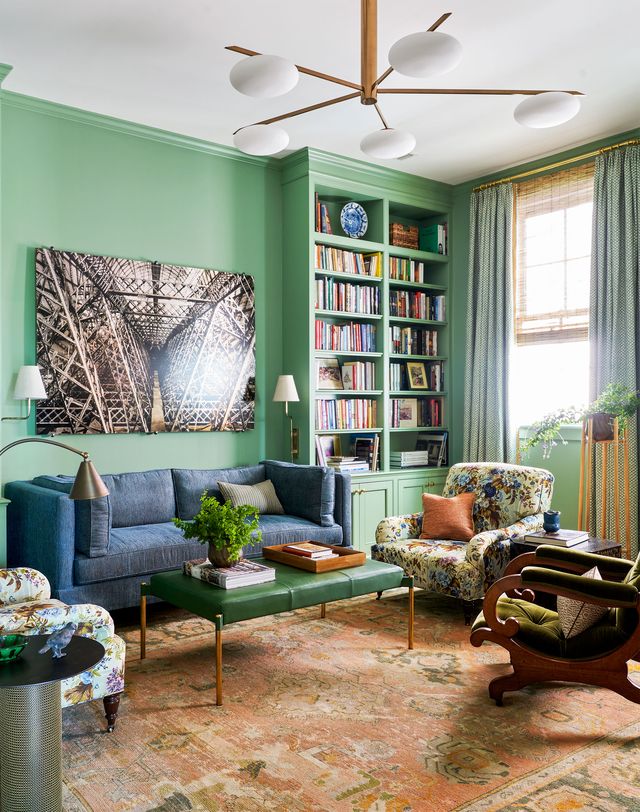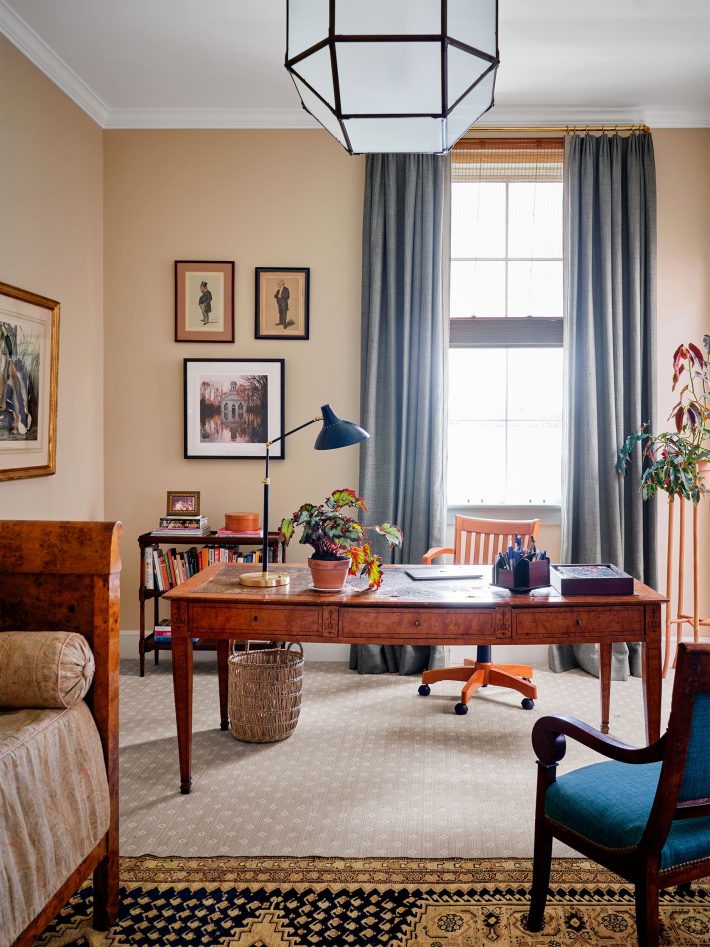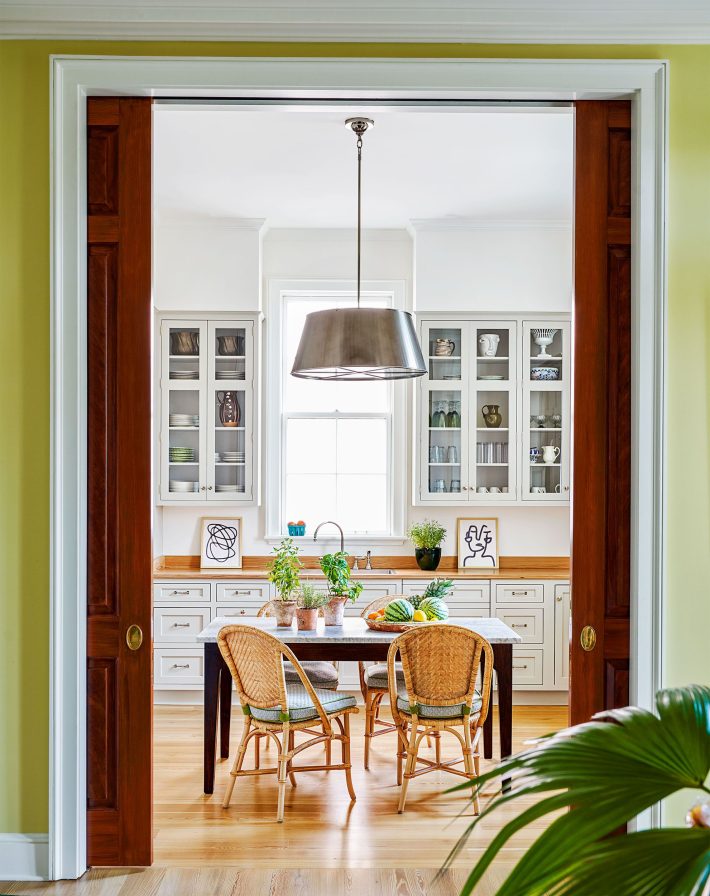Big Easy living made even easier, thanks to Brockschmidt & Coleman.
BY NANCY HASS AND STYLED BY BEBE HOWORTH for ELLE DECOR

The journalist Walter Isaacson, former editor of Time magazine and biographer of Steve Jobs and Albert Einstein, comes to his love of New Orleans honestly: He was born and raised in the raucously omnivorous, ebullient city. Like many homegrown Southern intellectuals, he went north to make his reputation in the New York literary world. But all those years he was building his career, Isaacson never quite left behind the lyrical city of his birth, with its hothouse atmosphere of sophistication, culture, and inspiration.

Paul Costello
New Orleans, in particular, with vernacular architecture and design that is an eccentric mashup of Creole, Greek Revival, Italianate, and Edwardian influences, among others, is hard to quit, especially for those with creative imagination. Traditional Southern manners prevail here, but there is always a whiff of off-kilter fun in the air. Isaacson and his wife of 38 years, Cathy, a lawyer, still spend part of the year in their Upper West Side apartment near Central Park, but their spiritual home is in New Orleans, where they are deeply rooted in the community, serving on the boards of philanthropic and educational organizations.
For decades, they kept a grand, double-height parlor floor apartment in the French Quarter in an 1840s Creole townhouse smack in the middle of the nonstop revelry (“I love the live music in the streets and the parades,” Isaacson says). But once he took a faculty position a couple of years ago at Tulane University in Uptown New Orleans (he is the Leonard Lauder Professor of American History and Values), commuting to the campus from the house on Royal Street through the quarter’s wingding alleys became a bit too much of an obstacle course.
“I love the live music in the streets and the parades,” Isaacson says
They didn’t have to look hard for a new abode closer to work. A local developer and restoration specialist, Michael Carbine, who since Hurricane Katrina has made it his mission to create new housing and buoy the local economy, was in the midst of building a meticulously detailed six-unit apartment block 10 minutes from Tulane (via Isaacson’s ideal mode of transportation, the atmospheric, 150-year-old St. Charles streetcar).

Paul Costello
To design the interiors—counting the terraces, the apartment encompasses 4,000 square feet—the Isaacsons called upon Brockschmidt & Coleman, whose principals, Courtney Coleman and Bill Brockschmidt, are architects raised in Mississippi and Virginia, respectively; they have been business partners for more than 20 years and now split their practice between New York and New Orleans. The firm has plenty of experience with literary Southerners, having designed homes in both New Orleans and Greenville, Mississippi, for the late writer and bon vivant Julia Reed, as well as for the renowned historian Jon Meacham and his wife, Keith, who live in Nashville.

Paul Costello
The Isaacsons wanted their home to allude to the city’s eccentric style and its native design codes but not evoke them directly. Many New Orleans residences are dramatic and dark, with heavy lined silk drapes that puddle on the floor, crystal and beaded chandeliers overhead, a plethora of ornate European antiques, and artfully faded Oriental rugs. “That can be lovely, but it can also be overwhelming,” says Coleman.

Paul Costello
With an apartment of such scale—the ceilings are 12 feet high and the ample rooms have a traditional square format—it took cunning to ensure that the furnishings were not dwarfed. In a loft, for example, decorators might resort to installing massive sectionals and vast refectory-size slab dining tables, but that is neither the Isaac-sons’ nor New Orleans’s style; the project required finesse. The couple had quite a few good 19th-century antiques from their previous apartment. Brockschmidt and Coleman brought in such new acquisitions as an early-18th-century oak sideboard and an English Victorian club chair. They also added several contemporary light fixtures, including two huge, cagelike lanterns that dangle above a green slipper chair and a settee in a sand linen.
The Isaacsons wanted their home to allude to the city’s eccentric style
The Mardi Gras palette of emerald, purple, and gold may be ubiquitous in New Orleans, but the hues of the Isaacsons’ home are pale and serene. Cathy wanted a yellow dining room, so the designers used a misty shade to set off the Gustavian dining chairs upholstered in teal Belgian linen. The library has greenish-gray walls, with a digital image printed on metal by the New Orleans multimedia artist Dawn DeDeaux above a blue velvet sofa. On many afternoons, the Isaacsons each grab a volume from the shelves and wander out to the porch for a quiet hour before the evening’s guests arrive. “I love to listen to the clattering and ringing of the streetcar,” says Isaacson. “It’s the soundtrack of my happiest times.”